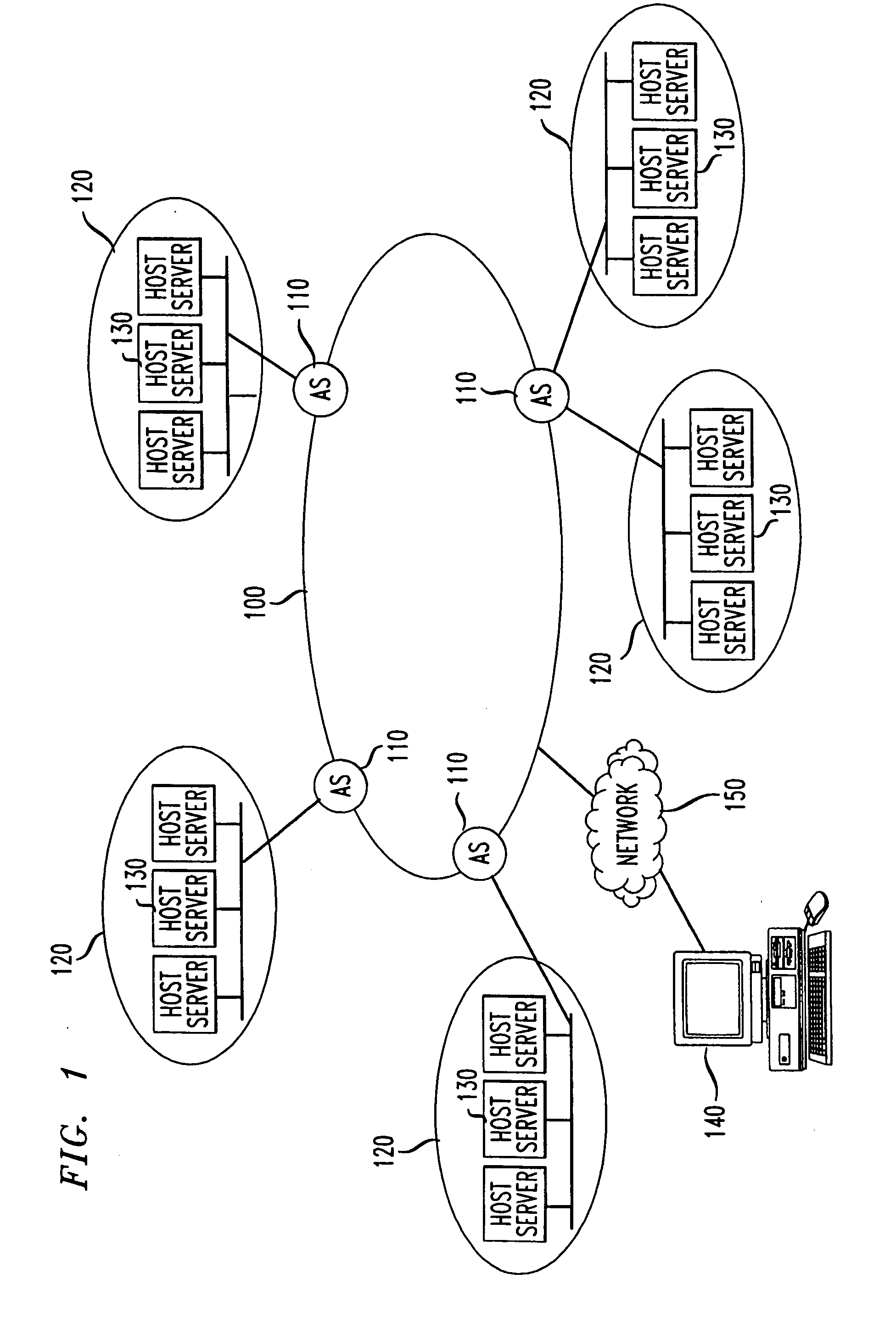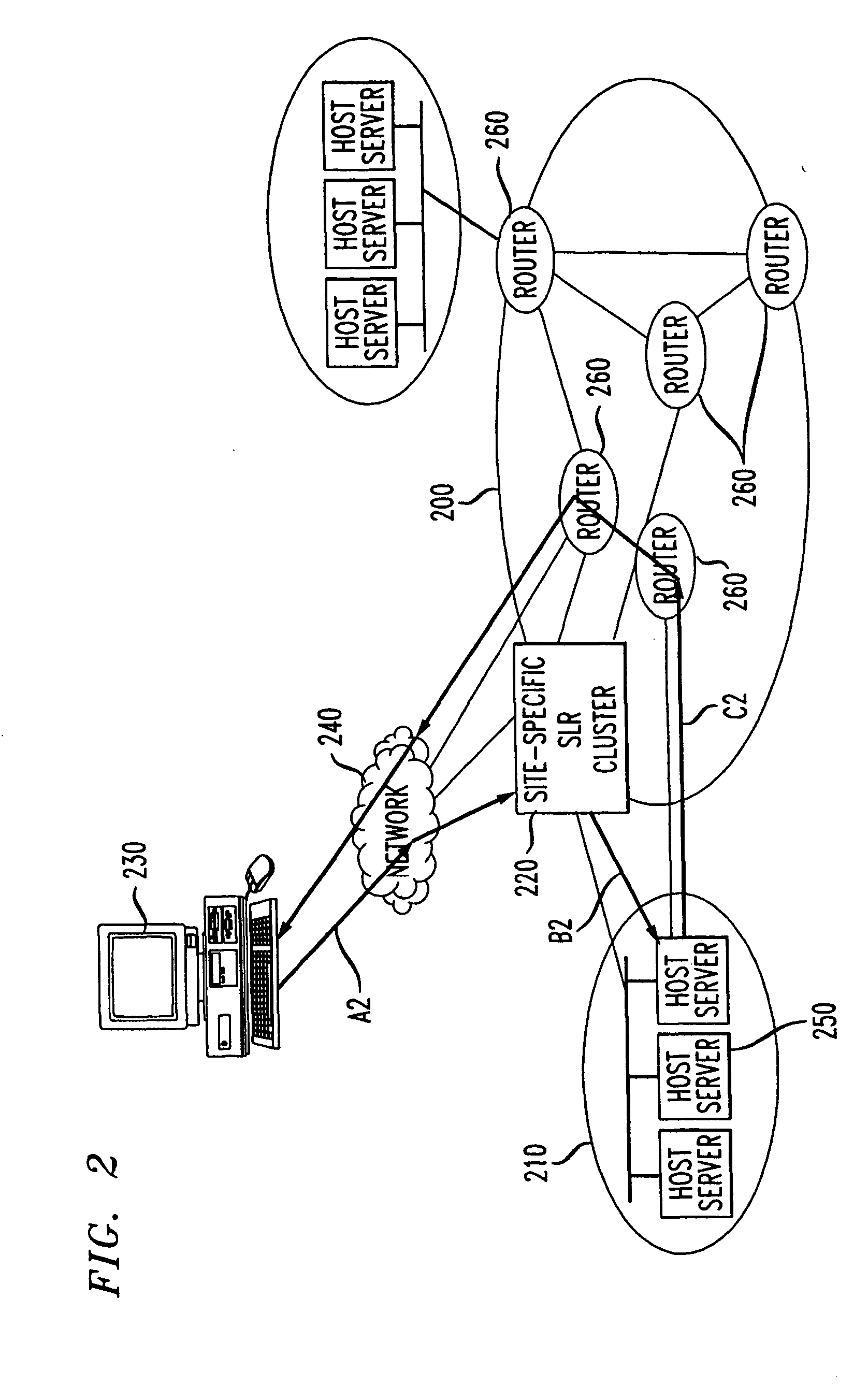System, method and apparatus for network service load and reliability management
a network service load and reliability management technology, applied in the field of service load and reliability management, can solve the problems of not having a standard for specifying services, the internet itself still requires some support from the internet service provider, and the approach is not scaled well
- Summary
- Abstract
- Description
- Claims
- Application Information
AI Technical Summary
Benefits of technology
Problems solved by technology
Method used
Image
Examples
Embodiment Construction
[0040] Throughout the explanation of the exemplary embodiments of the invention, the term "service level routing" refers to the capability of routing flows to host site servers implementing a named network service. Every network service is associated with the IP address of a virtual host, that, in theory, provides the service. A virtual host and the network service it provides appear to the rest of a network, e.g., the Internet, as a physical host site, having a single IP address. However, the virtual host can correspond to different physical host sites, determined in real-time through a service level routing map.
[0041] The exemplary embodiments of the invention relate to service level routing implemented in relationship to a Trust Domain (TD) that includes one or more ASs. As shown in FIG. 1, a TD 100 includes one or more ASs 110 that interact with other ASs 110 in the TD 100 and entities outside the TD 100. A client or client' customer originating a service request at a terminal 1...
PUM
 Login to View More
Login to View More Abstract
Description
Claims
Application Information
 Login to View More
Login to View More - R&D
- Intellectual Property
- Life Sciences
- Materials
- Tech Scout
- Unparalleled Data Quality
- Higher Quality Content
- 60% Fewer Hallucinations
Browse by: Latest US Patents, China's latest patents, Technical Efficacy Thesaurus, Application Domain, Technology Topic, Popular Technical Reports.
© 2025 PatSnap. All rights reserved.Legal|Privacy policy|Modern Slavery Act Transparency Statement|Sitemap|About US| Contact US: help@patsnap.com



